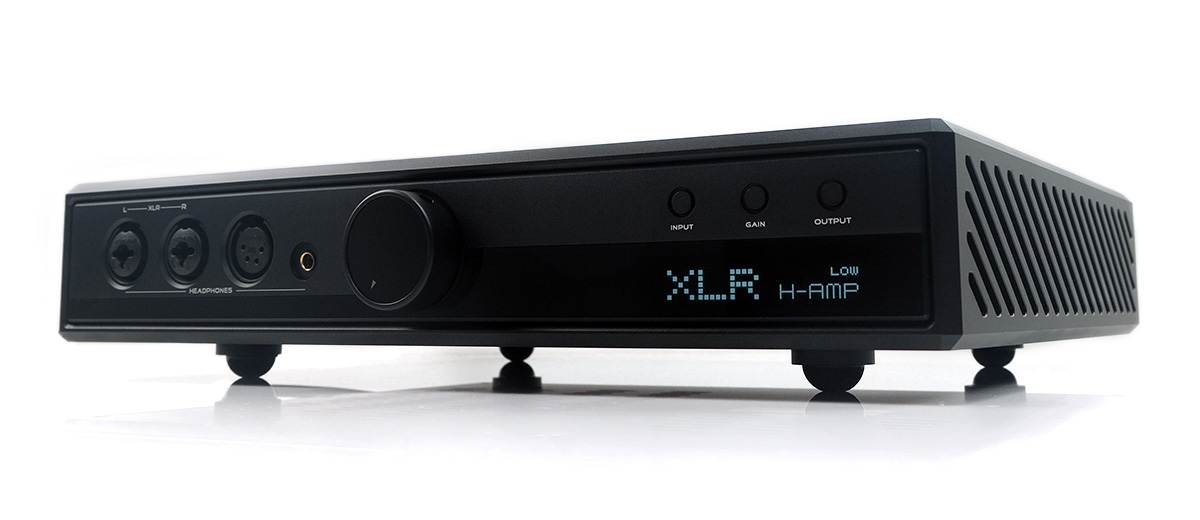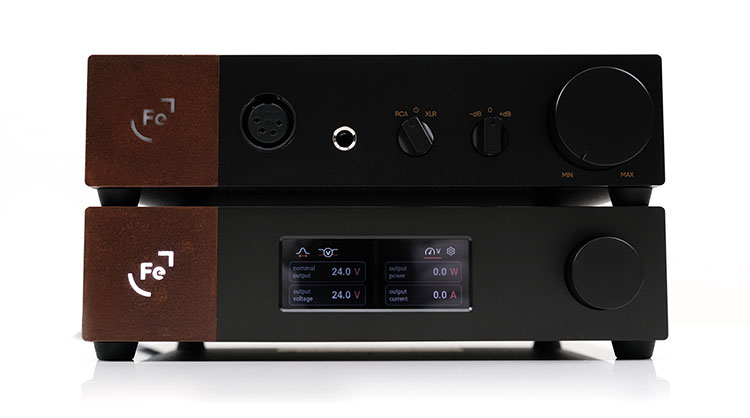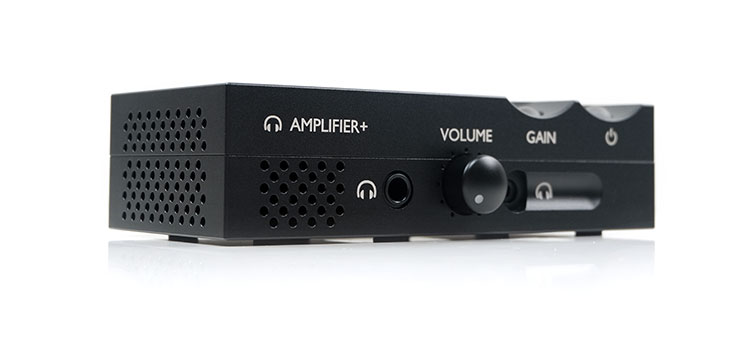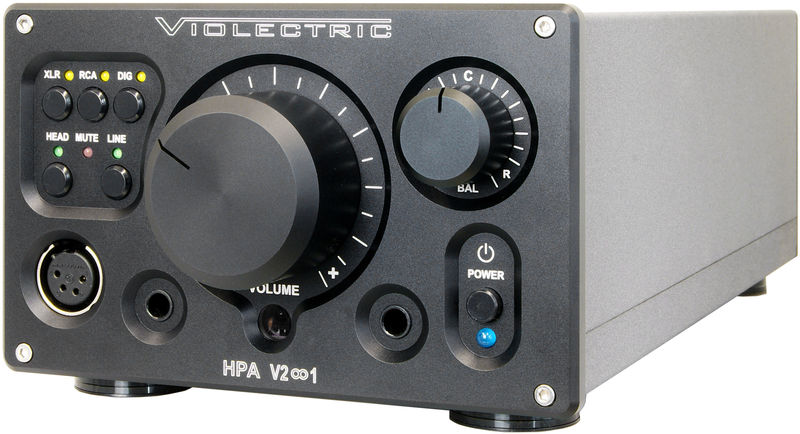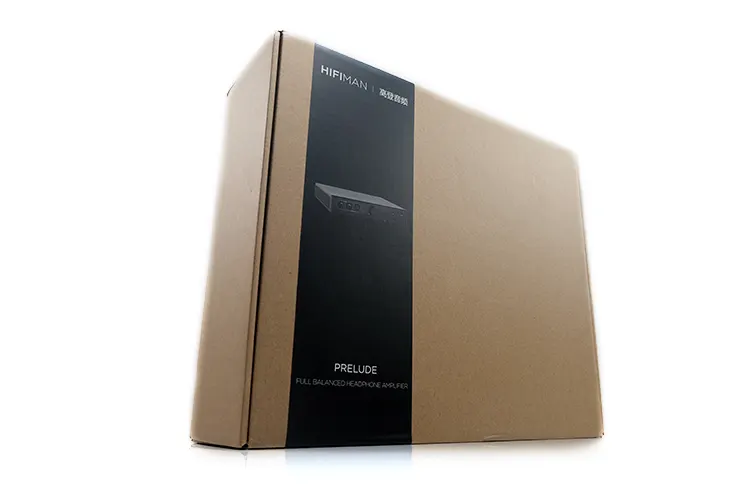Select Comparisons
The following comparisons to the Prelude were completed using the HIFIMAN Susvara and the HIFIMAN HE-R10P for our main headphones combined with the Ladder Schumann as our system DAC.
Ferrum OOR (With HYPSOS)
The Ferrum OOR, along with the HYPSOS PSU was launched in late 2021 and gained our Top Gear Award for best amplifier for the same year. The OOR pricing on its own is lower than the Prelude but with the HYPSOS it is just over $3k.
Technical
Both of these units are standalone analog headphone amplifiers with pre-amping capability though I believe the OOR’s preamp is via a by-pass control on the circuit rather than the Prelude’s completely separate pre-amplification circuit.
Though both are discreet-engineered circuits using transistors instead of integrated circuits, the OOR topology is a Class AB amplification design whereas the Prelude amp circuit is Class A and it does generate a bit more heat as a result.
The two units offer tons of power, perhaps some of the best I have seen in solid-state amplifiers I have reviewed to date.
The OOR has a slight edge with 8W balanced output power on loads of around 60Ω compared to just above 6W from the Prelude using a benchmarked 64Ω load. However, from what I know, both are churning out up to 10W into a 32Ω load.
Also, the OOR has a dedicated 6.35mm SE output at 2W into a 60Ω whereas the Prelude has 2 SE or a dual 6.35mm output but there is no drop in its rated output from these connections.
On its own, the OOR uses a 100/240V AC to 22-30 V DC switching power supply which would not be on par with that huge toroidal transformer inside the Prelude.
However, with the Weipu DC-coupled HYPSOS PSU it becomes a hybrid power system with a linear PSU and elements or some advantages of a switching power supply. It can also offer variable voltage parameters for pre-configured settings which you can adjust to affect the OOR audio performance.
Design
Of the two, the OOR is the genuine small-space desktop powerhouse whereas I tend to feel more comfortable with the Prelude on a rack with some space around it.
A few reasons for that. The first is that the Prelude is much heavier at 6.5 kg compared to just 1.8 kg for the OOR without the HYPSOS. With the HYSOS, the combo weighs 4.6 kg which is still almost 2 kg lighter.
Second, it is much wider, and finally, the Prelude’s Class A design generates more heat so it needs space for its venting system to work effectively.
The Prelude looks more like a system component than the OOR, though the OOR can form part of a nice compact stack with the similar design language of the HYPSOS, ERCO, or WANDLA DAC.
Aesthetically, the Prelude looks the classier of the two. The OOR has a very simple box design with a nice dash of brown on the side and a logo that lights up when powered on but has nothing like the sleep grills and glossy front panel finish of the Prelude.
Neither does the OOR offer an LED screen for mode and status display with everything switch-based on the front panel. You can, however, introduce a wide range of LED-based status checks via the HYPSOS but this is purely power-related.
The I/O is quite similar on the rear panel with both offering balanced and SE analog options for source and pre-amp outputs. The OOR does have some additional manual controls at the rear for brightness display plus the coupler for the HYPSOS connection.
The front for both offers similar features including gain control as well as XLR and 4.4mm PO connection options with the OOR also offering an SE 6.35mm jack.
Performance
I went purely with the Susvara for the A/B simply because these are two ideal solid-state amplifiers to drive HIFIMAN’s flagship headphones.
I wouldn’t give a ringing endorsement of one amp over the other in this comparison. Both amplifiers offer excellent dynamic range and resolving capability but their differing presentations play to the individual strengths of the Susvara.
The OOR is cleaner sounding, and punchier, making a play on the speedy transient response of the Susvara. It can sound hyper-detailed in a way because of the additional emphasis on the treble presence, teasing out a slightly drier sharper timbre in the process, cutting out more decay than the Prelude.
The Prelude sounds a bit warmer, and more natural in tone with a comparative attenuation in the highs giving it a more liquid-like sound and something I would expect to hear from the Schumann R-2R DAC behind it. Of the two, it is less fatiguing and not as clinical in its performance.
It is also a more grandiose presentation and does better with the huge staging quality of the Susvara in terms of width. Vocal imaging sits back a bit enhancing the perception of space whereas the OOR pairing pushed the vocal imaging further forward and tucked instruments behind a little.
I would also classify the OOR soundstage as narrower but with really precise and clean imaging within that narrow soundstage. The Prelude’s sense of space gives instruments and vocals plenty of room to breathe on the Susvara so that softer and slightly longer decay diffuses into nothing rather than overlapping and muddying up the presentation.
The Prelude is the better match spatially for arena-type audio mixes whereas for rapier-like tracks with high BPM on the lows, the OOR seems more impactful and slightly tighter in its delivery.
Chord Electronics Anni
The Chord Electronics Anni analog headphone and speaker amplifier was also launched in late 2021 with our review coming in early 2022. The Anni is priced at $1795 in the US though a little lower if you are in the UK.
Technical
Another pure analog headphone amplifier with a HiFi dimension, however, the Anni is quite a different proposition to the Prelude.
For a start, it’s single-ended only in its circuit design whereas the Prelude is fully-balanced for both headphone and pre-amplification. Second, rather than working as a pre-amplifier, the Anni connects directly to speakers with provision for left and right 4mm banana-plug sockets.
Third, the Anni is a Class AB amplification circuit as opposed to the Prelude’s Class A. That being said, both are MOFSET-based with the Anni using a dual-feed forward error-correction amplifier technology, (a form of MOFSET amplification) drawn from their high-end ULTIMA range.
The Prelude is the more powerful of the two amplifiers at up to 10W into 32Ω cascading down to 1W at 300Ω which is the last comparable benchmark measurement with the Anni for headphone performance.
The Anni can do 10W into an 8Ω output power rating for its speaker amplification performance. However, for headphones, that peak output drops to 3W for 32Ω, and at 300Ω it drops further to around 500mW. That is a big difference in capability in terms of headline numbers.
Both offer two-stage gain controls but for the Anni, this is only applicable to the speaker output with a variable of around 8-9dB between each stage. The Prelude’s two-stage system is applicable for both its headphone and pre-amplification outputs.
Design
The Anni is adorable and a true pocket space filler with its diminutive form factor and 625g weight. It’s a fraction of the size of the 6.5 kg Prelude which is really a rack component for me and equally as comfortable on a HiFi shelf as it is on a large desk.
There is a stacking dimension to the Anni with the Qutest and Huei all using the same petite but solidly-built black CNC-machined aluminum unibody design. There is even a stacking rack for all three to complete the setup.
The SE I/O on the Anni does help keep it that slim form factor. You get a dual RCA x 2 analog input with dual 4.4mm banana plug sockets just underneath and they take up very little space on the rear panel of the Anni. The Prelude’s heavy bias to XLR for its balanced I/O stretches things a bit more literally.
The front of the Anni has no balanced outputs as you might expect from an SE amplifier circuit but it does offer both 6.35mm and 3.5mm TRS which can be used simultaneously.
I would contend the Prelude offers more here with XLR 4-pin, 4.4mm, and its dual 6.35mm, 3-pin XLR options for its PO on the front panel.
The last point of difference is the control system and the famous Chord Orb system. Thankfully, it’s not too complex on the Anni with just a power orb button and the gain control with just two color combos.
That being said, I do prefer the Prelude text-based LCD and clearly labeled buttons working in tandem giving me instantly recognizable information about status and gain.
True the Anni orbs are easy enough to remember but something like the Hugo TT2 display wouldn’t hurt either for ease of use.
Performance
For this comparison, I changed the DAC to the Qutest to see if ‘home advantage’ would play into the hands of the Anni with the Susvara pairing.
The Anni can give a reasonable account of itself with the Susvara pairing but the volume dial is going to hit the wall before it gets loud with the Qutest 2V output setting.
You can get more headroom and better dynamics if you switch to the Qutest 3V setting but the Anni volume dial will come quite close to the precipice all the same. No such issue with the Prelude which is a step up in terms of dynamic range and clarity with tons of volume headroom to burn beyond optimal listening levels.
The small advantage, (if a basshead), you have with the Anni/Susvara pairing is the bass weight and aggressiveness which is considerably fuller and more forward-sounding than the Prelude.
The Prelude is more balanced sounding for my tastes whereas Anni’s heavier lows rob the soundstage of some comparative complexity in terms of instrumental separation.
I also brought in the Arya Stealth Magnet Edition headphones and dropped the Qutest down to 2V since this is a more efficient headphone compared to the Susvara.
Again, you can pick up on more or less the same tonal and technical differences from the Susvara pairing. The Anni has a more rounded tone with a distinct bass bias and less presence and air the further up you go.
The Prelude is more balanced and natural sounding, with an improved treble presence giving it a more accurate harmonic balance compared to the Anni. It also delivers a more open midrange with better width and teases out more air and headroom from the Arya Stealth compared to the Anni.
Violectric HPA V281
The Violectric HPA V281 is a classic analog headphone amplifier that surprisingly just got a bit of a relaunch this year priced at $2699.95. We have referenced it a lot in our older reviews but never did a full review of it.
Technical
Both units are fully balanced headphone amplifiers with pre-amplification output capability.
Internally, the V281 is not one amplifier but two V200 circuits with two large toroidal transformers, (15 + 25 W), though I am not sure how the size and rating compare to the Prelude’s transformer since the specs for the HIFIMAN version are not readily available.
The Prelude also has two independent amplification circuits inside for headphone and pre-amplification. Both amplifiers are discreet-designed, with ALPS RK27 pots, however, the V281 is a Class AB with 8 transistors per channel whereas the Prelude is Class A.
One thing to note is the emphasis on gain control inside the V281. Not only with multiple dip switches to the rear to control the level of pre-gain but the whole pitch of the amplifier is to operate on a low gain basis for noise control and better dynamics. The stock setting is a ‘unity gain’ of +8 dB (unbalanced) or +14 dB (balanced).
The Prelude makes much less of a play on gain but it does have a gain control, albeit a much simpler one but easier to access from the front and not the rear. You get high and low with a 0.3V differential whereas the pre-again on the V281 has a 24 dB swing.
The output power is where the Prelude differs markedly from the V281 in certain areas. I say differs because the V281 power curve is not as linear as the Prelude with its peak at 5.6W on a 100Ω down to 2.8W at 32Ω.
At 600Ω it offers more power than the Prelude at 2.7W compared to 560mW and both seem closer around the 50-100Ω marker. The V281 has substantially less output power at lower impedance values compared to the 10W of the Prelude at 32Ω.
Design
I guess both of these amplifier designs are fairly aggressive but there is something just so utilitarian and manly about the classic V281 thin form factor.
With its huge volume dial, and very clear button panels it’s certainly a unique design and I would hesitate to even call it dated since it is a visual that Violectric continues to use to this day. One thing to note is that its thin but deep profile makes the V281 perfect for slotting into tighter spaces than the Prelude.
The Prelude has a more modern aesthetic with its lower profile, cleaner finish, and more integrated aluminum housing with stylish venting. The cleaner LED and button control combo makes it more suited to those users who are maybe not necessarily be into fiddling with micro-settings to the level of the V281 such as gain.
If you are a ‘fiddler’ then the V281’s dip switch control system at the back, (or internally for line-out levels), gives you a lot more flexibility for headphone matching so there is less pressure to crank the dial-up or keep it too low for proper control.
I/O on the Prelude and V281 are consistent in some respects but the new upgraded 2023 version of the V281 will come closer with a 4.4mm balanced PO that the original did not have.
Otherwise, you have provision on the V281 for both SE and balanced PO with 6.35mm and a 4-pin XLR socket as well as analog inputs and matching pre-amp outputs in both SE and balanced on the rear.
The Prelude will give you a similar setup on the rear but with 2 SE or dual-function 6.35mm/3-pin XLR outputs on the front for headphones.
Performance
For this comparison, I switched to the Schumann DAC going balanced to both amplifiers. The V281 was set to its default unity gain with the HE-R10P closed-back as the main headphone pairing.
These two amps are quite a bit closer in terms of dynamic range and technical capability. There are some tonal differences as well as some imaging or dimensional variations though.
In a nutshell, the V281 is the more aggressive sounding, particularly on the bass impact, but not quite as soothing through the mids and treble.
Tonally, both amps bias more to the warmer side though I would say the V281 has less treble refinement. You can hear more rawness in the upper mids harmonic balance from the HE-R10P.
The Prelude has a slightly softer treble tuning with the same headphones. You pick up the difference in harder-sounding instruments like synth clicks, claps, and wooden percussion. Here the V281 is a little cooler and sharper on the peak of the strike in the note whereas the Prelude delivers a bit more warmth and smoothness.
Vocals are further forward and more distinct on the V281 and more relaxed and richer on the Prelude. There is a degree of roundness in the V281 mids note quality, especially on the lower mids where the stronger bass influence makes its presence felt.
It is also less open sounding compared to the Prelude mids with that stronger vocal imaging sometimes sitting right on top of piano notes whereas the Prelude delivers more air and space around each instrument and voice.
The bass performance from the V281 is what makes it so enjoyable. With the HE-R10P it’s deep, punchy, and forward with strong PRaT. The Prelude comes close with its fulsome lows but does not quite have the same urgency or aggressiveness.
Our Verdict
The HIFIMAN Prelude is a truly excellent solid-state analog amplifier and a fantastic match for the likes of the Susvara and the Diana TC, two headphones that people often pair with far more expensive equivalents.
It’s got power, bags of it, and all mated to a very smooth and agreeable sound signature that, importantly, has a high enough degree of transparency to ensure DACs do matter in this setup. Go R-2R, go for something known for staging prowess for a genuinely immersive and grandiose presentation which is where I think the Prelude shines.
The only bum note was the 300Ω Atrium pairing but that is nit-picking because I was comparing it to an amplifier at twice the price for staging performance. It’s still quite good.
Otherwise, this is a very smart addition to the HIFIMAN amplifier lineup and speaks volumes about the excellent engineering credibility of Goldenwave at the same time.
HIFIMAN Prelude Technical Specifications
- Frequency Response: 20-50KHZ, ±1dB@1KHz
- Signal to Noise Ratio: -113dB @1KHz
- THD+N: 0.0009%, low gain, @1KHz
- Power Output: (0.1% @1KHz, balanced) 10W@32Ω, 6W@64Ω, 2.5W@150Ω, 1W@300Ω, 560mW@600Ω
- Total Power Consumption: <50W
- Dimension (L*H*W): 330*56*260mm, protrusions not included
- Net Weight: 6.5KG

